Ramsar Wetlands Of Kenya
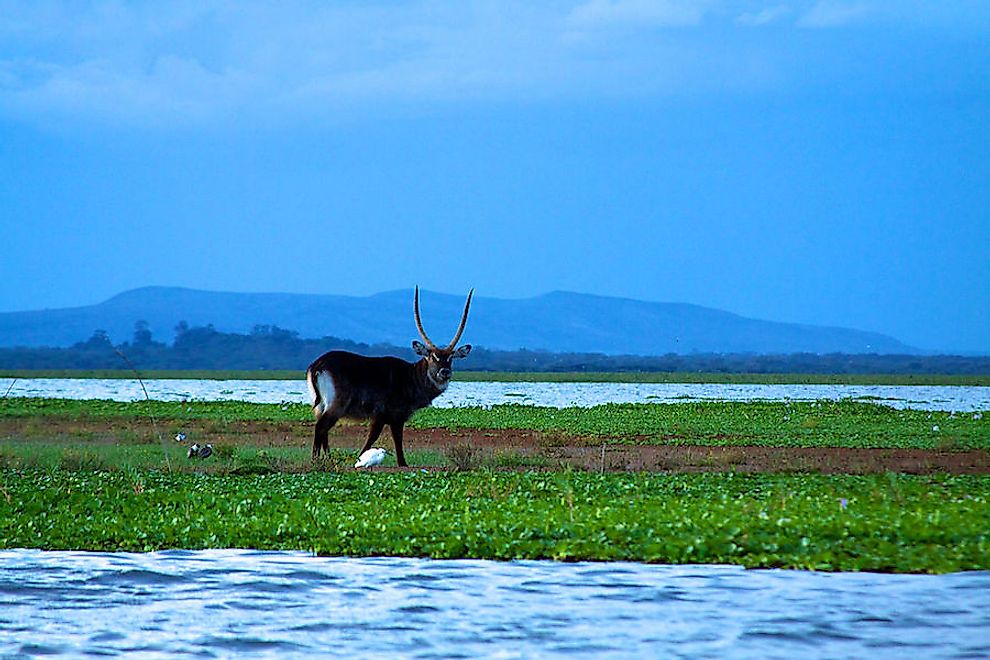
The Ramsar Convention is an international treaty that has been designed for the sustainable use and conservation of wetlands of international importance in different parts of the world. The Convention recognizes several wetland areas in countries across the world as Ramsar wetlands of international significance. Here, we present a list of such wetlands in Kenya.
6. Tana River Delta Ramsar Site
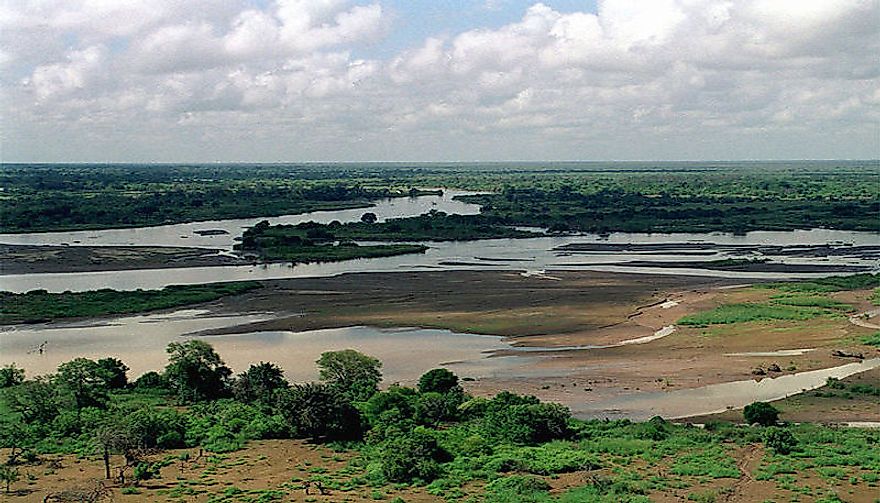
The Tana River Delta Ramsar Site is a wetland of international significance located in Kenya’s Coast Province. It is eastern Africa’s second most important river delta and estuarine ecosystem. The wetland area constitutes a variety of habitats like floodplains, coastal habitats with mangrove plantations, intertidal zones between freshwater and marine brackish ecosystems, pristine beaches, etc. The diverse habitats support a variety of marine organisms like marine prawns, shrimps, fish, threatened species of turtles, bivalves, etc. Several endemic species of organisms like the Tana River mangabey, the Tana River red colobus, etc., also live here. The Tana River Delta region is also an important birding zone.
5. Lake Nakuru
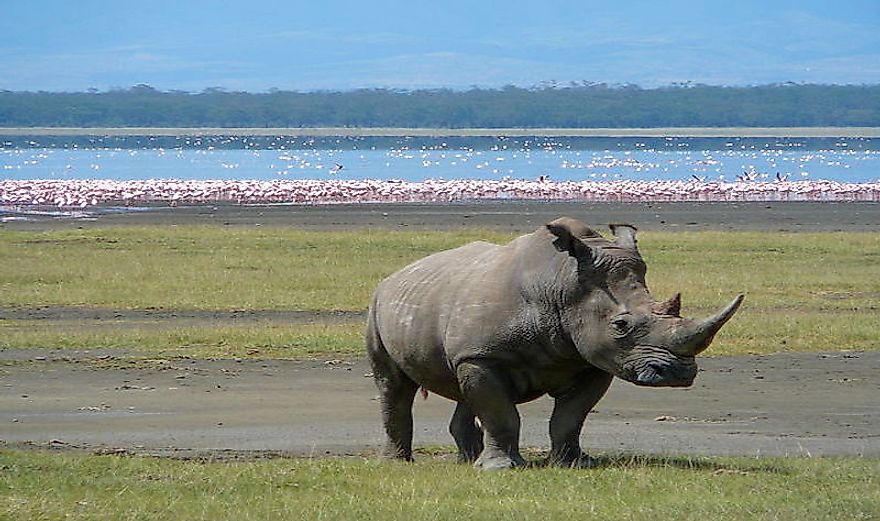
Lake Nakuru is one of the most famous Rift Valley soda lakes located at an elevation of about 1754 meters above sea level. The lake attracts a large number of flamingos since it hosts an abundance of algae. Other species of birds like the African fish eagle, pied kingfisher, Verreaux’s eagle, Goliath heron, and others also live in the Lake Nakuru region. The place in around the lake also hosts baboons, Rothschild's giraffe, warthogs, Masai lions, leopards, cheetahs, southern white rhinos, Eastern black rhinos, and several other species of fauna. The lake is currently protected under the Ramsar Convention and is part of the 188 square km Lake Nakuru National Park that was established in 1961.
4. Lake Naivasha
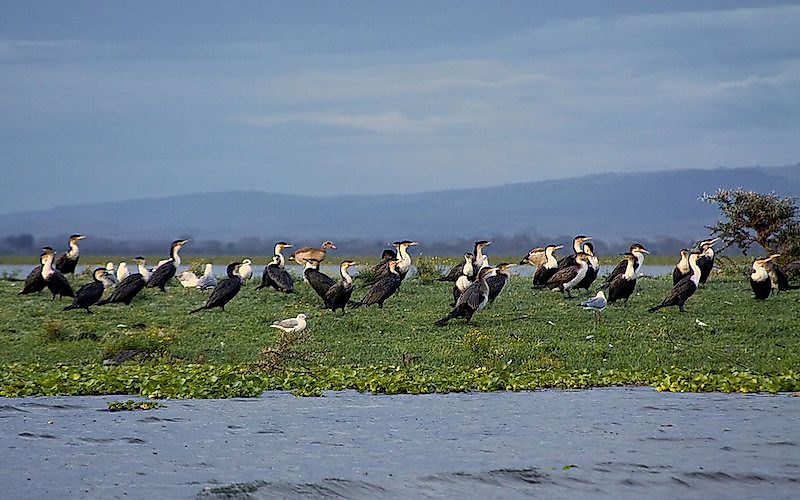
Lake Naivasha, located outside the Naivasha town, is a freshwater lake in Kenya. The lake derives its name, meaning “rough water” from the local Maasai name Nai’posha. The lake is located in the Kenyan Rift valley’s highest elevation at 6,181 feet. The lake hosts a great diversity of wildlife including more than 400 species of birds and a significant hippo population. The fish population of the lake has varied over the years due to the introduction of new species, climate change, and fishing activities.
3. Lake Elmenteita
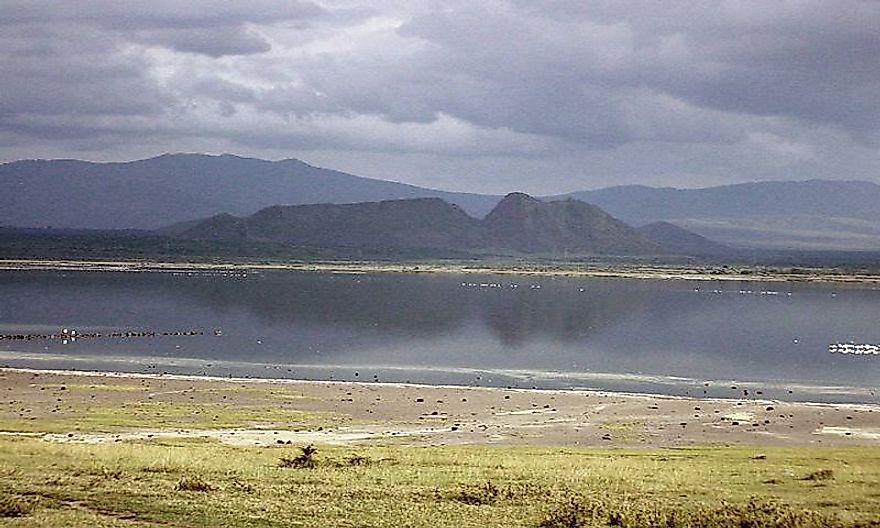
A soda lake, Lake Elmenteita is part of the Kenyan Great Rift Valley and is located about 120 km to the northwest of Nairobi in Kenya. The lake is easily visible from the Nairobi-Nakuru highway running along a nearby escarpment allowing tourists to enjoy a spectacular vista of Lake Elmenteita. The "Kekopey" hot springs located at the southern end of the lake are believed to have miraculous properties. Several species of birds are either residents of the lake area or migrants visiting the lake during the winter season. The reed beds near the lake serve as fishing grounds for pelicans and herons. Both greater and lesser flamingos also visit the lake. The introduction of the tilapia fish in the Lake Elmenteita has, however, dwindled the flamingo populations. The introduction of the fish has attracted a large number of fish-eating birds which also consume the eggs and chicks of the flamingos. Zebras, elands, gazelles, and warthogs can also be seen grazing along the shores of the Lake Elmenteita.
2. Lake Bogoria
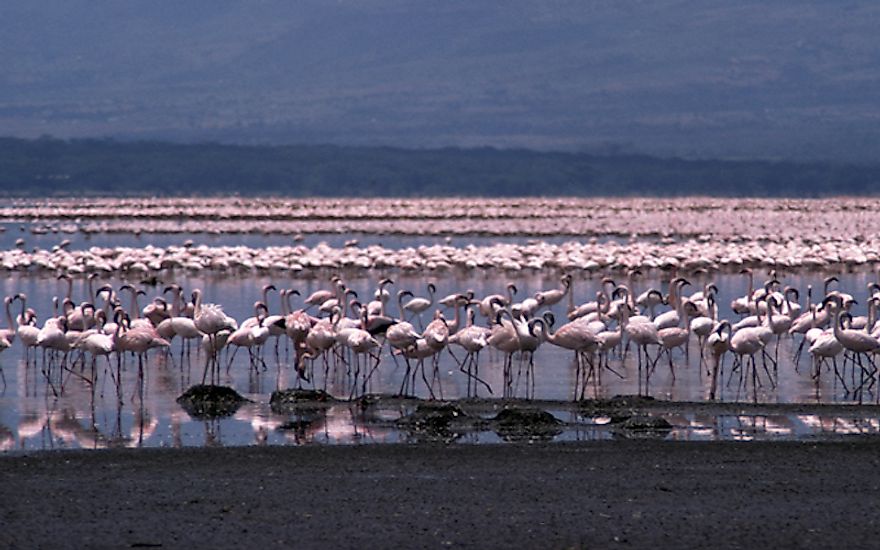
Lake Bogoria is an alkaline, saline lake located south of the Lake Baringo in a half-graben basin of a volcanic region. The lake is a part of the Rift Valley lakes and is known for the occasional hosting of the largest lesser flamingo population of the world. A Ramsar site, the lake is recognized internationally for being a significant habitat for birds and other wildlife. The lake is quite shallow with a depth of about 10 meters and is about 3.5 km wide and 34 km long. The Lake Bogoria is also known for its geysers and hot springs. The large concentration of Na+, HCO3−, and CO32− ions are present in the lake waters making the waters highly alkaline. Lake Bogoria was once the traditional home of the Endorois people who after being forced to leave the area in the 1970s are now demanding that they are returned their ancestral land.
1. Lake Baringo
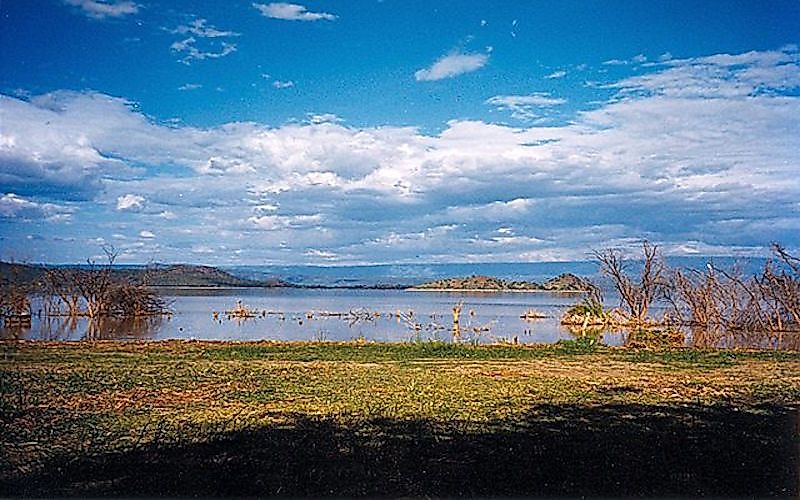
Lake Baringo is the most northern of the lakes of the Kenyan Rift Valley and also one of the two freshwater lakes in the region. The lake has a surface area of nearly 130 square km and is located at an elevation of about 3,180 feet. Several rivers like the Ol Arabel, Perkerra, and Molo feed the lake. Lake Baringo is located off the beaten track and houses over 470 species of birds including migratory waterbird species. Besides, the lake also hosts the Nile crocodile, the hippopotamus, and several other species of reptiles, amphibians, and invertebrates. Several smaller islands are also located on the lake.











